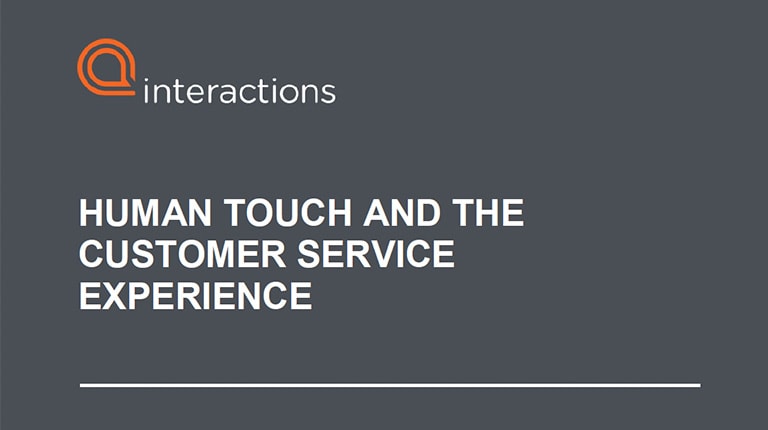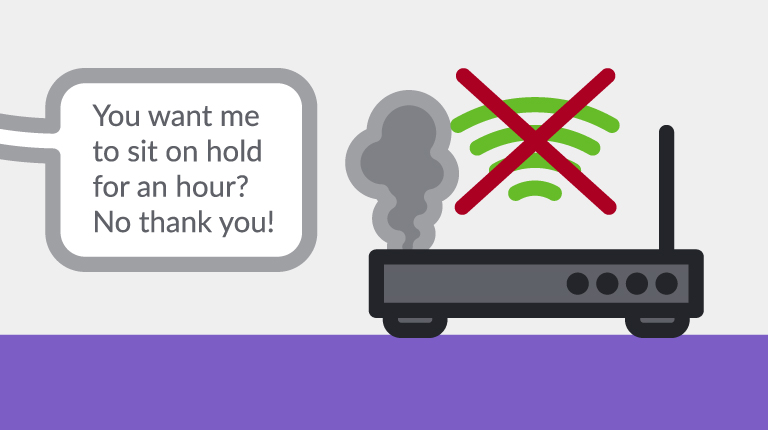Interactions recently hosted an interactive discussion on the current state of automated customer care services. Local leaders in customer care experience and contact center management came together to hear the results from our study conducted in collaboration with researchers from Boston University and share thoughts on concerns, successes, and the future of the customer care industry. Throughout the presentation and discussions, there were several key themes that emerged.
Agents Provide Excellent Customer Service
Most participants felt that, when done correctly (meaning customers are being routed quickly and efficiently), agent support makes for a great customer experience. When this happens, participants felt confident that their companies are successfully and efficiently resolving customer issues.
But Agents are Not Always the Best Solution
There are, however, significant issues when it comes to utilizing live agents. First, customers are not always making it to the right place, usually as a result of an antiquated Interactive Voice Response system (IVR) or other automated customer care solution that can’t properly understand the caller’s intent. Secondly, relying heavily on live agent support makes it difficult to quickly adjust to peak calling times or seasons and easily handle large volumes of requests.
Participants also agreed that there are far too many calls reaching live agents that don’t necessarily require agent support – such as simple billing inquiries or password resets. This is largely the result of multiple channels – such as chat, web, mobile – not functioning the way they should. This is despite the large investments companies continue to make in non-voice automated customer care channels.
The Standards for Customer Service Have Changed
In the past, most companies only had to be concerned about what competitors within their own industry were doing in terms of customer service experience. But now, more and more consumers are holding all companies to the standards of the leaders in customer service, regardless of industry. So, a company could be providing the same or better levels of service than its industry competitors – but unfortunately that might not be enough. Customers expect the same level of superior care and multichannel capabilities from all companies they interact with, whether that be a top online retailer or their health insurance provider.
Companies are Investing Heavily in New Technologies
As we learned in our study, many consumers are starting to show increasing preference for web chat because of its instantaneous responses and the flexibility for multitasking. Participants in our discussion confirmed that their companies are making large investments in this area – because it makes sense from both a cost and customer experience perspective.
Companies are also investing more in monitoring and responding to social posts – but the reason for has less to do with cost savings and more to do with public perception. The choice to move into social customer service is based on a desire to make sure customers are not spreading negative posts about the company in a very public space. The companies that have invested here, however, have sometimes noted an unintended consequence – that is, that by being so responsive on social channels, they have inadvertently trained customers to go to social first for the quickest resolution.
But Some Still Feel They are Lagging Behind
Several participants also reported facing issues within their industries in regards to being slow to adopt modern technology and customer service developments. In many cases, this was due to a lack of competition within certain industries, such as utilities. The result is a disjointed customer experience with long wait times that ultimately increases frustration and leads to an ever-declining CSAT score.
The Goals and Expectations for IVRs Need to Change
Overwhelmingly, participants agree that the IVR is a necessary gateway to the customer service experience – especially since so many customers still use the phone as their primary method of contacting customer service. That being said, there is a recognized need to make the IVR less of a roadblock and more of a helpful resource that can either enable customers to complete self-service tasks or quickly direct them to a live agent when needed. The consensus is that the IVR should be seen as an enabling technology.
Furthermore, participants noted the need to make all digital channels function at the same level – so that live agents aren’t fielding calls that couldn’t be resolved through a web chat or text. The customer care experience needs to be a seamless one – which means providing and easy and efficient path for the consumer to resolve issues.
For more information about customer experience related to automated customer service channels, read our report: Human Touch and the Customer Service Experience.





